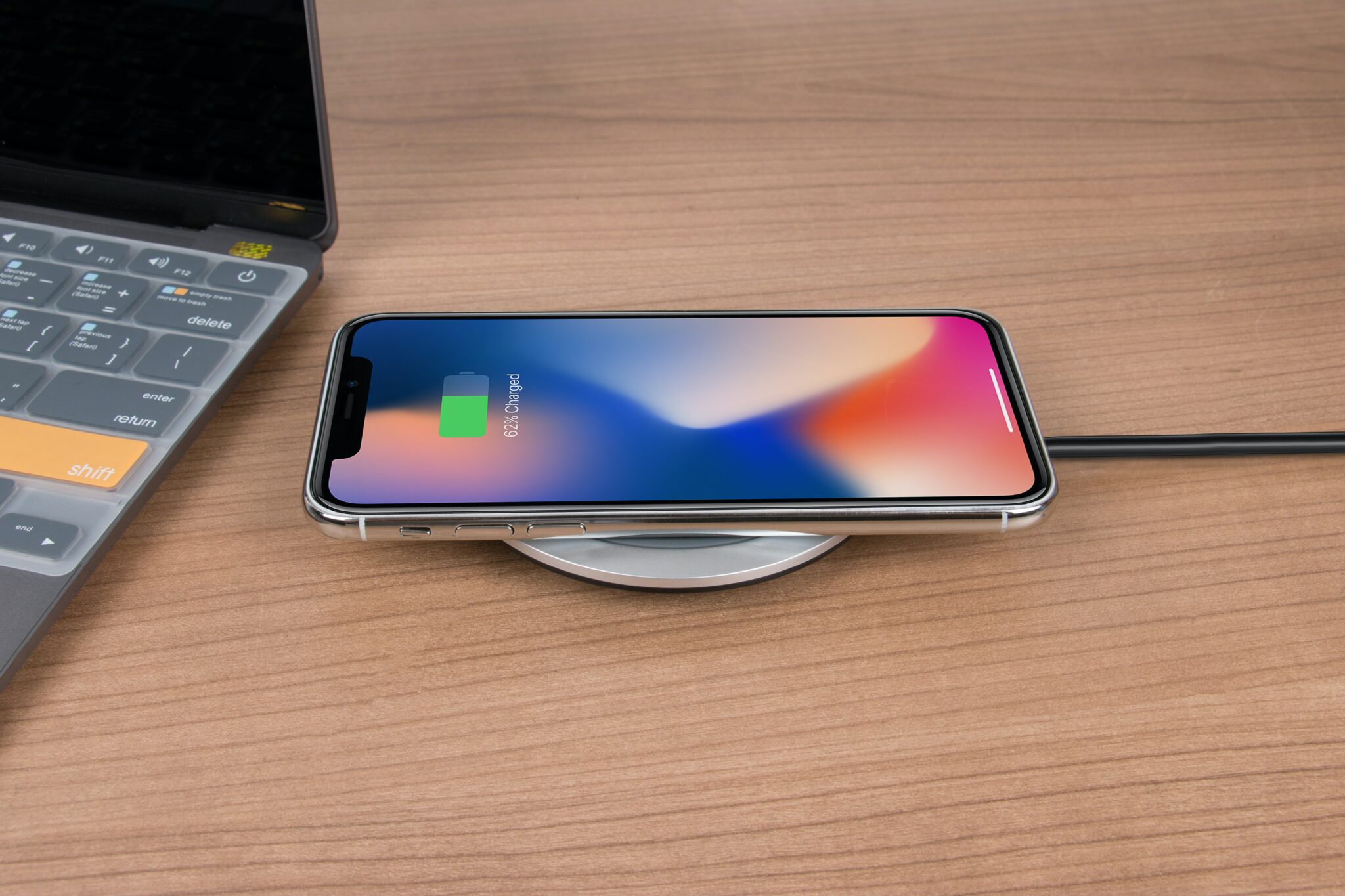All present-day implementations of reverse wireless charging systems require you to place your phone face-down, potentially risking scratching or cracking the display. Apple engineers could change that with a future iPhone. Although current-generation iPhones don’t support reverse wireless charging, a patent recently awarded to the Cupertino giant describes an induction system using which you could charge other devices wirelessly by placing them on your iPhone’s screen, instead of on the back.
The patent for “Through-Display Wireless Charging” makes the device display your wireless charging pad so any secondary device you place on it would start charging automatically. This could be your AirPods case, Apple Watch, or another phone. The document reads:
“A personal electronic device (e.g., a tablet computer) may be configured to wirelessly charge an accessory (e.g., a stylus) through a display face of the device,” it states. “At least a portion of the display face may be transparent to facilitate display viewing.
(Such) a configuration can include a tablet computer or smartphone that is configured to allow for a stylus or other accessory to be wirelessly charged on a face of the personal electronic device,” continues the patent application, “e.g., through a display of the personal electronic device.”
The patent document also describes how multiple inductive charging coils can be placed under a MacBook’s frame on either side of the trackpad to facilitate wireless charging of multiple devices simultaneously. The coils could also be placed between the outer shell and the MacBook’s display, allowing the notebook to serve as a wireless charging pad when shut.
The concept can also be extended to an iPad that could wirelessly charge an Apple Pencil if you leave it on the tablet’s display. This would be useful and a more natural movement for people than snapping the Apple Pencil along one edge of the iPad.
Note that the entire screen or chassis does not serve as a charging pad in all these unique wireless and reverse wireless charging implementations. Like current wireless chargers, only a specified region directly above the induction coil would charge devices wirelessly. This is one limitation Apple is yet to work around. While the idea described in the patent is useful and doable, a patent grant is no assurance that Apple will implement the technology.
That said, the patent is credited to eight inventors, one of who is Zaki Moussaoui. The inventor has previously been credited with patenting technology that prevents wireless charging from interfering with CarKey.
Tell us what you think about this technology in the comments below.
[Via PatentlyApple]
